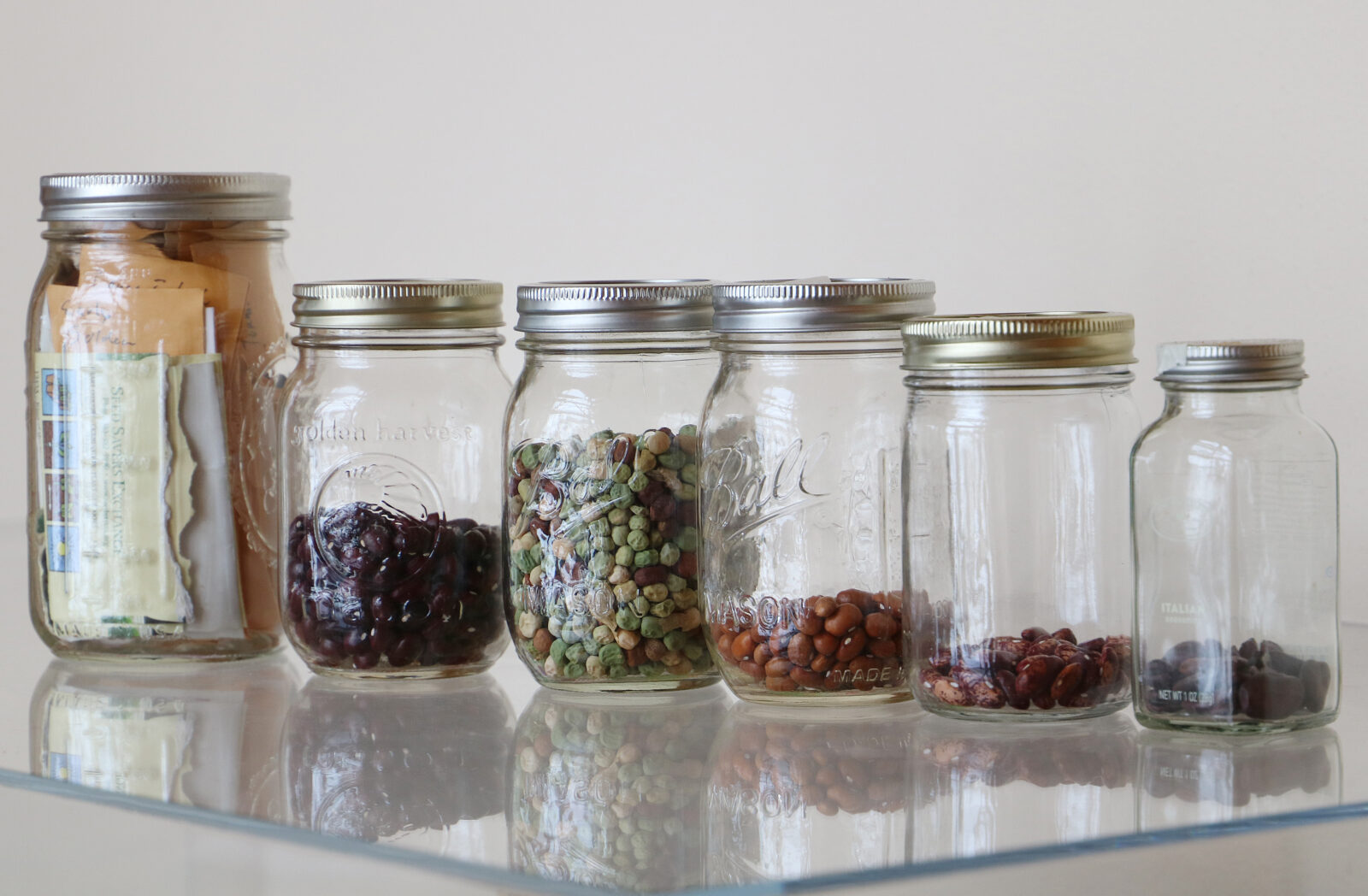Learn More
How to Store Seeds

How to Store Seeds

You found a rare seed and excitedly scooped it up. Or maybe you stumbled upon a really great stock-up sale or attended a seed swap and came away with new treasures.
And then you remember: planting is months away.
Protect your finds and ensure your seeds are viable when the planting time is right with proper seed storage. It doesn’t take much, especially if you are storing seeds for two years or less. A cool, dark, dry, and pest-free spot is all you need.
Seed Storage Tip 1: Maintain Cool Conditions
Keep seeds out of direct sunlight in a cool spot that maintains a fairly consistent temperature. Consider a cold closet, a basement, or a room on the north side of your home that remains cool year-round. Freezing isn’t necessary for short-term storage, but you can refrigerate seeds, provided they—and your refrigerator—are sufficiently dry.
Seed Storage Tip 2: Maintain Dry Conditions
All seeds need to germinate is sufficient water and temperatures that are favorable for plant growth. Make sure your seeds don’t sprout or mold by storing them in a spot that isn’t humid and ensure the seeds are dry before sealing them in a container. Moisture is an especially important factor if you are freezing or refrigerating your seeds. If seeds are too wet, they can rot in the refrigerator or suffer frost damage in the freezer. If you store seeds in the refrigerator or freezer, place the packets in an air-tight container and ensure the seeds are properly dried to begin with. If you are storing seeds you’ve saved yourself (bravo!), follow the correct seed-saving processes to ensure they are dry.

Consistency is key when it comes to temperature and humidity levels. This is why you should avoid storing seeds in a spot that isn’t climate-controlled, like a garage or shed, where temperatures and moisture levels can fluctuate wildly.
Seed Storage Tip 3: Protect the Seeds
We’ve all had a plant or two that’s caught the attention of a pest. Critters, rodents, and bugs also enjoy nibbling on seeds that are waiting to be planted. Choose a storage spot that is pest-free and you can keep a close eye on it to ensure it remains that way. Glass jars, metal containers, or wire mesh can further protect seeds from invaders.
However, there is something to be said for a little breathing room.
When using a storage area that is cool and dry year-round, you may be able to keep seeds in paper bags, mesh bags, or envelopes in what is called “open storage”. Moisture and heat generated by the seed during respiration can escape through these gas-permeable containers. This is also a smart tactic when you aren’t sure about the moisture content of the seed. But you will still want to take precautions to protect your seeds from pests.
Some seeds do not fare as well in storage. Crops like carrots, parsnip, onions, and leeks are notoriously short-lived. For these, freezer storage is best as seeds from these varieties that are stored at or near room temperature will quickly lose their ability to germinate and grow.
With these safeguards in place, you’ll be able to plant your seeds later and enjoy watching them grow.
This was originally posted on the Seed Savers Exchange blog on September 16, 2016.